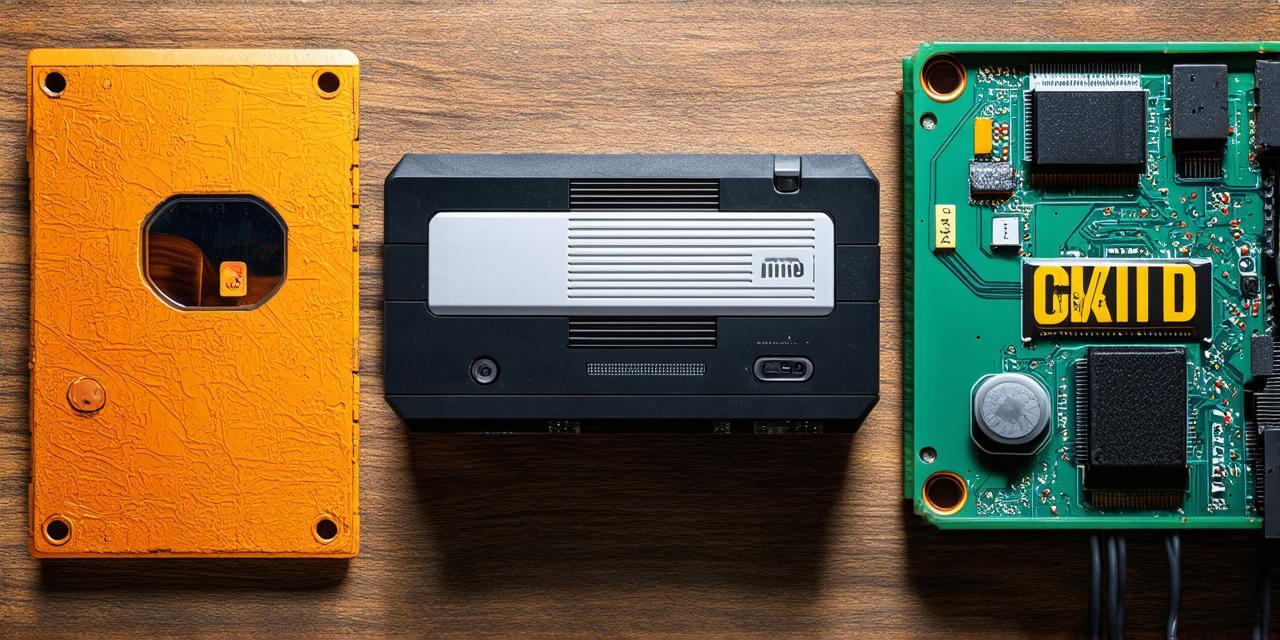In the world of gaming, it is often thought that video game consoles have been around for as long as we can remember. But did you know that the first video game console was actually created in the 1950s? In this article, we will explore the origins of video game consoles and where the first one was made.
The history of video game consoles
Before the creation of video game consoles, video games were primarily played on computers. However, as technology advanced, it became possible to create specialized devices that were specifically designed for gaming.
One of the earliest examples of a video game console was the Magnavox Odyssey, which was created in 1972. This console was the first home video game console and was designed by Ralph Baer, who is often credited with inventing the home video game console. The Magnavox Odyssey was a success and paved the way for the creation of other video game consoles.
Where was the first video game console made?
The Magnavox Odyssey was created in the United States, specifically in Lanham, Maryland. This is where the first video game console was made and where the technology that would eventually lead to modern video game consoles began.

However, it’s worth noting that there were other early attempts at creating video game consoles before the Magnavox Odyssey. For example, in 1958, a device called the Brown Box was created by Aman Gupta and Estle Ray Mann. This device was the first computer-based video game console and was used to play games such as Spacewar! and Tennis for Two.
While the Brown Box is not widely considered a true video game console, it did pave the way for the creation of more advanced gaming devices. And who knows, if it weren’t for the work of these early pioneers, we might not have the powerful and immersive gaming experiences we enjoy today.
The impact of video game consoles
Video game consoles have had a profound impact on popular culture and technology as a whole. They have made gaming more accessible to the general public, allowing people of all ages to enjoy games from the comfort of their own homes.
But video game consoles have also had a significant impact on other areas of technology. For example, they have helped drive advancements in graphics technology, processing power, and storage capacity. These advancements have not only made gaming more immersive and realistic, but they have also had applications in other fields such as medicine and entertainment.
Case studies in video game console development
To better understand the origins of video game consoles and where the first one was made, let’s look at some case studies in video game console development.
The Magnavox Odyssey: The first home video game console
As mentioned earlier, the Magnavox Odyssey was the first home video game console and was created in 1972. It was designed by Ralph Baer and was a success, selling over 100,000 units within its first year of production.
The Magnavox Odyssey used an analog television set as its display and had two controllers that were connected to the console via cables. Games were loaded onto the console using cassette tapes, which were inserted into a cassette tape reader on the back of the console.
One of the key features of the Magnavox Odyssey was its ability to play games with up to four players simultaneously. This made it an instant hit and paved the way for the creation of other multiplayer video game consoles.
The Atari 2600: The first popular video game console
In 1977, Atari released the Atari 2600, which was the first widely popular video game console. It was designed by Jay Fry and was a massive success, selling over 5 million units within its first year of production.
The Atari 2600 used an analog television set as its display and had two controllers that were connected to the console via cables. Games were loaded onto the console using cassette tapes, which were inserted into a cassette tape reader on the back of the console.
One of the key features of the Atari 2600 was its ability to play games with up to four players simultaneously, just like the Magnavox Odyssey before it. The Atari 2600 also introduced the concept of cartridges as a way to load games onto the console. This made it much easier for consumers to purchase and play games, which helped drive its popularity.
The Nintendo Entertainment System (NES): The first successful video game console with digital graphics
In 1985, Nintendo released the Nintendo Entertainment System (NES), which was the first successful video game console with digital graphics. It was designed by Shigeru Miyamoto and was a massive success, selling over 60 million units worldwide.
The NES used an analog television set as its display and had two controllers that were connected to the console via cables. Games were loaded onto the console using cartridges, which were inserted into a cartridge slot on the front of the console.
One of the key features of the NES was its use of digital graphics, which allowed for more detailed and realistic visuals. The NES also introduced the concept of ROM chips as a way to store game data on the cartridges themselves, which helped reduce loading times and improve overall performance.
The Sega Genesis: A console with advanced graphics and processing power
In 1989, Sega released the Sega Genesis, which was a console with advanced graphics and processing power. It was designed by Yuji Nishikado and was a massive success, selling over 20 million units worldwide.
The Sega Genesis used an analog television set as its display and had two controllers that were connected to the console via cables. Games were loaded onto the console using cartridges, which were inserted into a cartridge slot on the front of the console.
One of the key features of the Sega Genesis was its advanced graphics and processing power, which allowed for more detailed and realistic visuals. The Sega Genesis also introduced the concept of 3D graphics, which would become a major trend in gaming in the years to come.
The PlayStation: A console with CD-ROM drives
In 1994, Sony released the PlayStation, which was a console with CD-ROM drives. It was designed by Ken Kutaragi and was a massive success, selling over 80 million units worldwide.
The PlayStation used an analog television set as its display and had two controllers that were connected to the console via cables. Games were loaded onto the console using CD-ROMs, which were inserted into a CD-ROM drive on the front of the console.
One of the key features of the PlayStation was its use of CD-ROMs as a way to load games onto the console. This allowed for much larger game sizes and improved overall performance, as CD-ROMs had much higher storage capacities than cassette tapes or cartridges.
The Nintendo 64: A console with advanced graphics and controls
In 1996, Nintendo released the Nintendo 64, which was a console with advanced graphics and controls. It was designed by Shigeru Miyamoto and was a massive success, selling over 32 million units worldwide.
The Nintendo 64 used an analog television set as its display and had two controllers that were connected to the console via cables. Games were loaded onto the console using cartridges, which were inserted into
